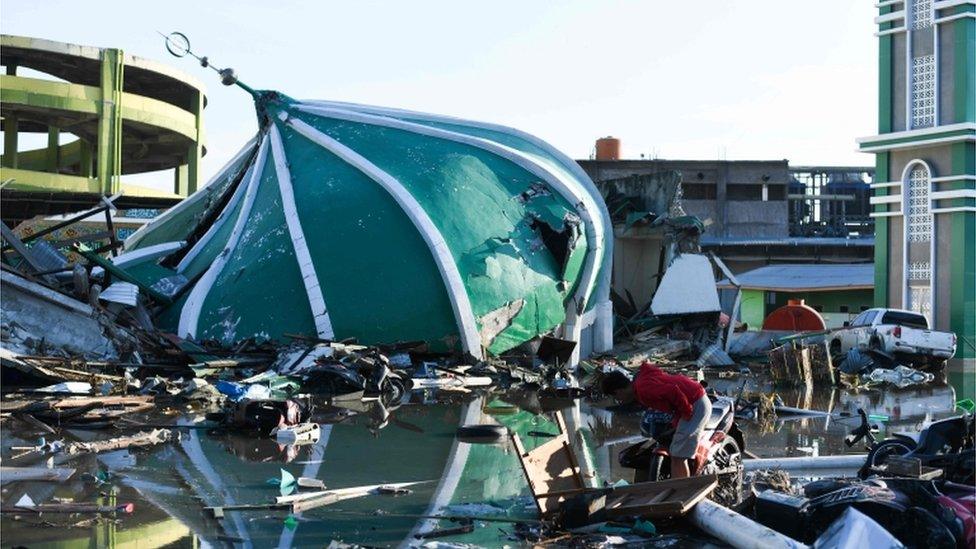Indonesia tsunami: Search for victims to end, though hundreds still missing
- Published
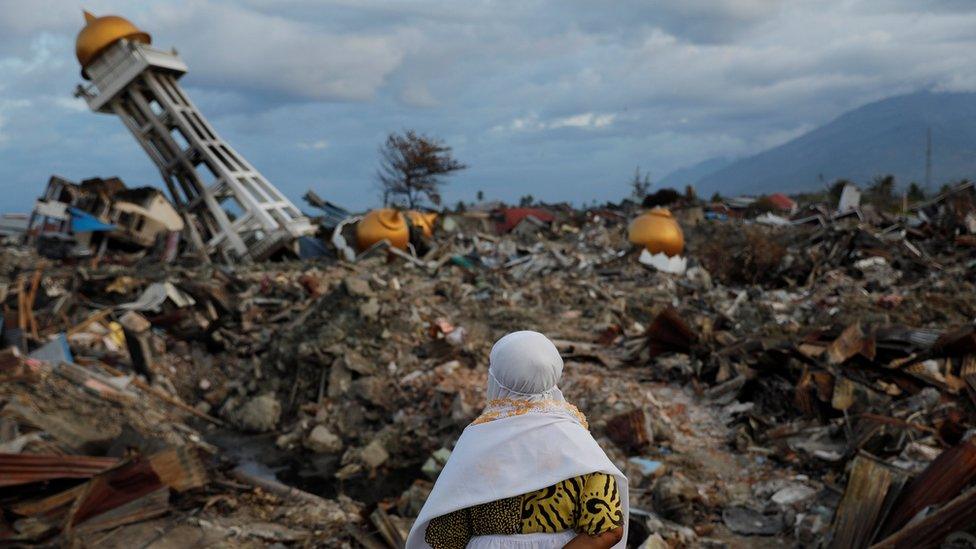
More than 1,750 people were killed in the earthquake and tsunami
Indonesian officials have said the search for victims of last month's earthquake and tsunami is to end on Thursday - despite the fact hundreds of people are still unaccounted for.
The disaster struck part of Sulawesi two weeks ago, leaving at least 1,754 dead and another 2,549 injured.
Officially, 683 people remain missing, though some put that figure far higher. No-one has been found alive since the third day of the search.
The city of Palu has been hardest hit.
The 7.5 magnitude earthquake struck on 28 September, bringing down buildings and, in some areas, turning the ground to liquid in a process called "liquefaction" and moving entire neighbourhoods.
This was followed by a tsunami.
The BBC's Hywel Griffith says that after nine days rescue teams on Sulawesi are tiring as they continue the relentless, grim task of recovering bodies.
More than 30 were found in one place on Saturday alone, with more found on Sunday.
News agency AFP reports that the devastation in two areas - Petobo and Balaroa - has been so bad, officials are considering declaring them mass graves. Some reports suggest the numbers missing in these areas could reach the thousands.
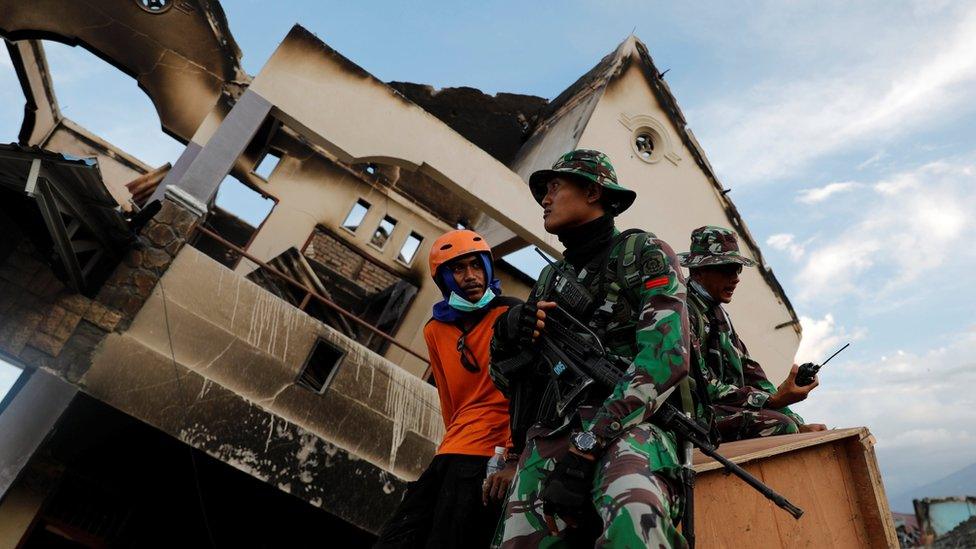
Rescue workers are tiring nine days into the search
Sutopo Purwo Nugroho, spokesman for Indonesia's disaster agency, said those who had not been found by Thursday would be listed as missing, presumed dead.
The focus will then shift to a relief operation, to help the at least 70,000 people displaced by the disaster.
But the decision has left many unhappy.
Dede Diman told Reuters that rescuers had not even begun to search the area where he believed his sister was.
"We're already angry," the 25-year-old said. "We don't agree with giving up. Even if they give up, we won't. We want to find our sister."

What was Palu like?
Bustling city with a population of approximately 350,000 people, with many banks and supermarkets
Situated in a rain shadow - where there is very little precipitation - and one of Indonesia's driest places
Near the popular beach area of Tanjung Karang
Served by a busy regional airport

Why was the disaster so bad?
The 7.5-magnitude quake struck just off the central island of Sulawesi at 18:03 (10:03) on Friday at a depth of 10km (6.2 miles), setting off a tsunami that soon after engulfed Palu with waves of up to 6m.
Scientists believe the tsunami may have been set off by an underwater landslide. The waves built up height and speed as they travelled down the long narrow bay towards Palu.
The Red Cross estimates that more than 1.6 million people have been affected.
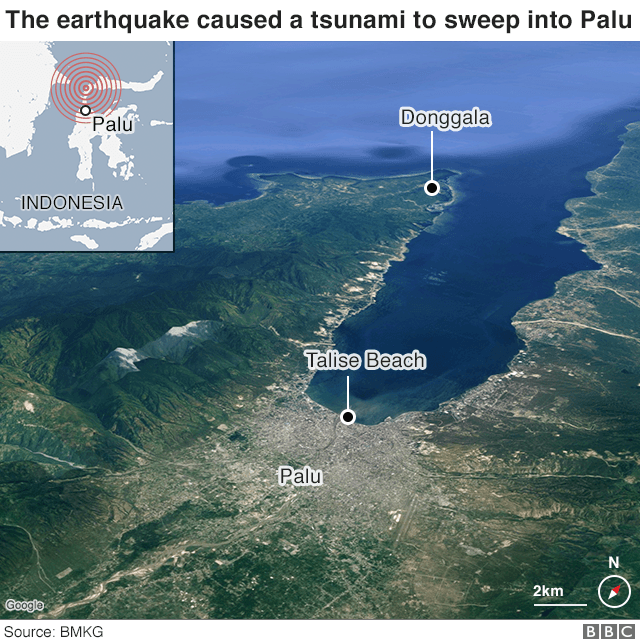
- Published3 October 2018
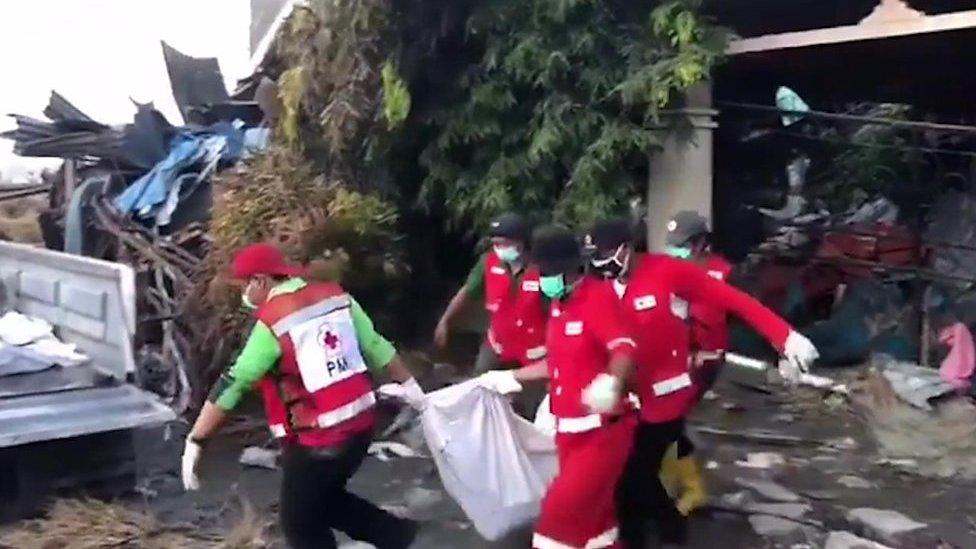
- Published3 October 2018
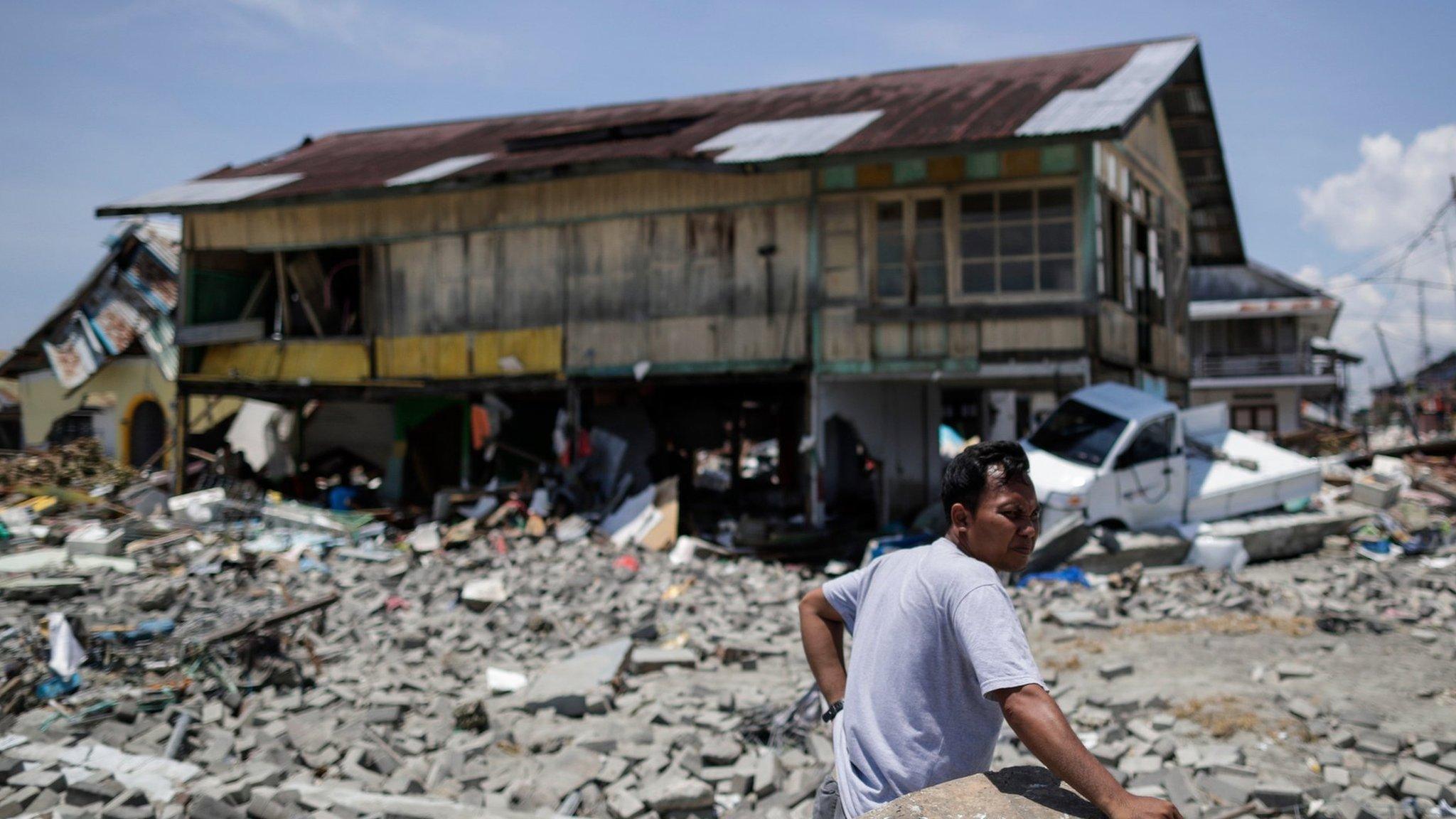
- Published29 September 2018
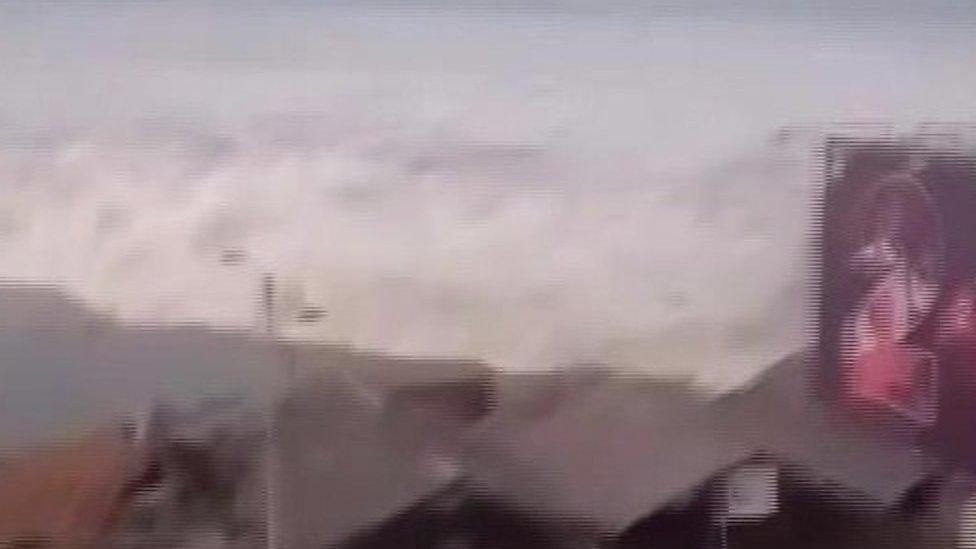
- Published2 October 2018
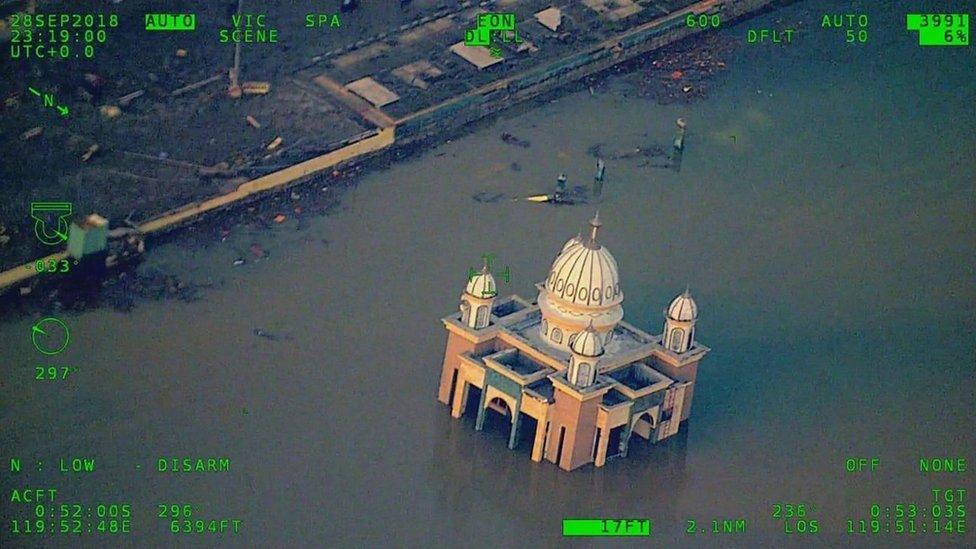
- Published2 October 2018
